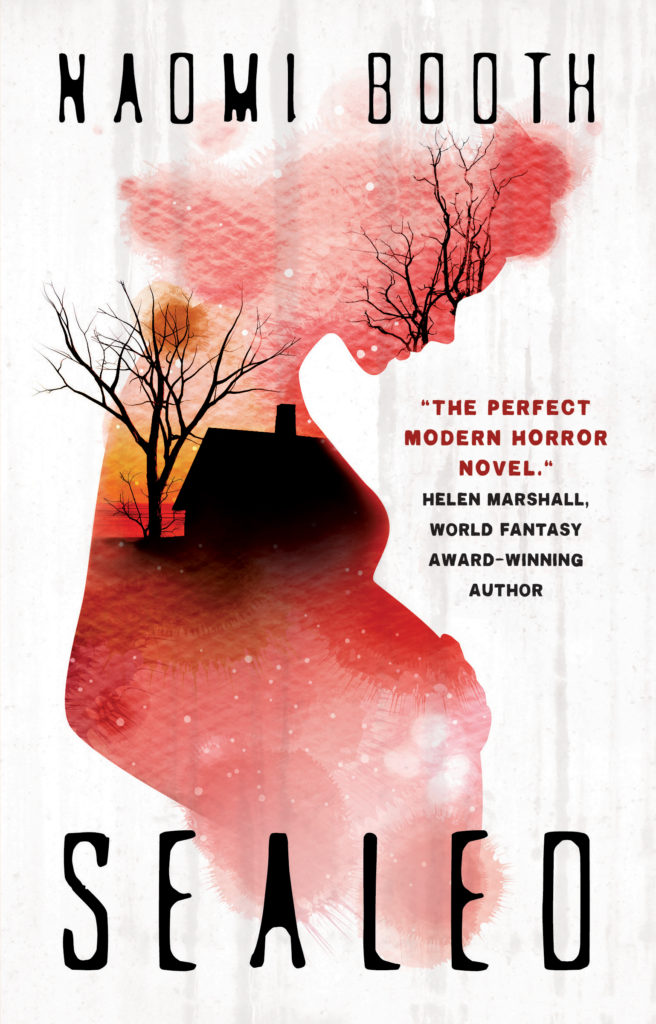
Some of the most unsettling horror taps into a primal and very real fear: that our bodies will somehow turn on us. It’s the sort of case where only the severity needs to be increased for a taste of the uncanny to emerge. We wrestle with our own bodies’ failures all the time, from chronic conditions to sudden illnesses. We struggle with our own health and we reckon with the health of those closest to us. Horror doesn’t need to do much to strike a chord here.
Naomi Booth’s Sealed goes about its foray into the disquieting with a high concept and a creeping sense of dread. Narrator Alice is very pregnant; accompanied by Pete, a man with whom she has an often frustrating relationship, she ventures into a rural environment. What’s sent them out there? Well, there’s a new disease going around, and it makes your skin grow, sealing up things like your eyes, your nose, and your mouth. It’s nominally treatable if you catch it early enough, but there’s the rub: do you stay in a city with a higher chance of getting it and a potentially overloaded hospital system, or take your chances in the countryside?
Sealed is all about dread and paranoia. Booth provides glimpses of the afflicted and the disease’s aftereffects, but this isn’t a book in which bodies transform into phantasmagoric nightmares before Alice’s (and, by proxy, our) eyes. Instead, it taps into the classic Twilight Zone-esque device of introducing a supernatural or science fictional element and seeing how people react to it — and, more broadly, how society reacts to it.
Throughout Sealed, it’s not clear if this crisis is a survivable one or if this is a pandemic that will gradually destroy humanity — and that ambiguity is key to Booth’s approach. This is a novel where the narrative voice is key, and Alice delivers on that measure. Her relationship with Pete demonstrates one side of her; her ambivalence about him demonstrates another. Her awareness of her soon-to-be-born child — and her concerns for their safety — represent yet another.
There’s a tendency among many to assume the worst from limited evidence: think about the awful results that can come up from googling certain symptoms, or the way anything that itched remotely could, in years past, be taken as a sign of a bedbug infestation. Now apply those same principles to a potentially deadly epidemic. Do your hands look normal, or are your fingers on the verge of fusing together? Is your nose all right, or are you about to lose the ability to breathe through it? Booth’s invocation of what this epidemic might look like are searing:.
He reaches down with a gloved hand. He draws his thick, rubberized fingertips across the place the mouth should be. There’s no movement. It’s as though the man has had a botched skin graft, fusing his lips together. It’s as though he’s wearing a breathing mask, Barry thinks, a mask made of… his own skin.
If that passage makes your flesh crawl, then you understand the considerable power Booth is reckoning with here. But, for all that this can unsettle, what emerges upon finishing Sealed is the discretion with which Booth writes about this subtly-altered world. Horror doesn’t have to be over the top to be effective, and Booth’s measured approach brilliantly proves it.
***
Sealed
by Naomi Booth
Titan Books; 240 p.
Follow Vol. 1 Brooklyn on Twitter, Facebook, and sign up for our mailing list.
